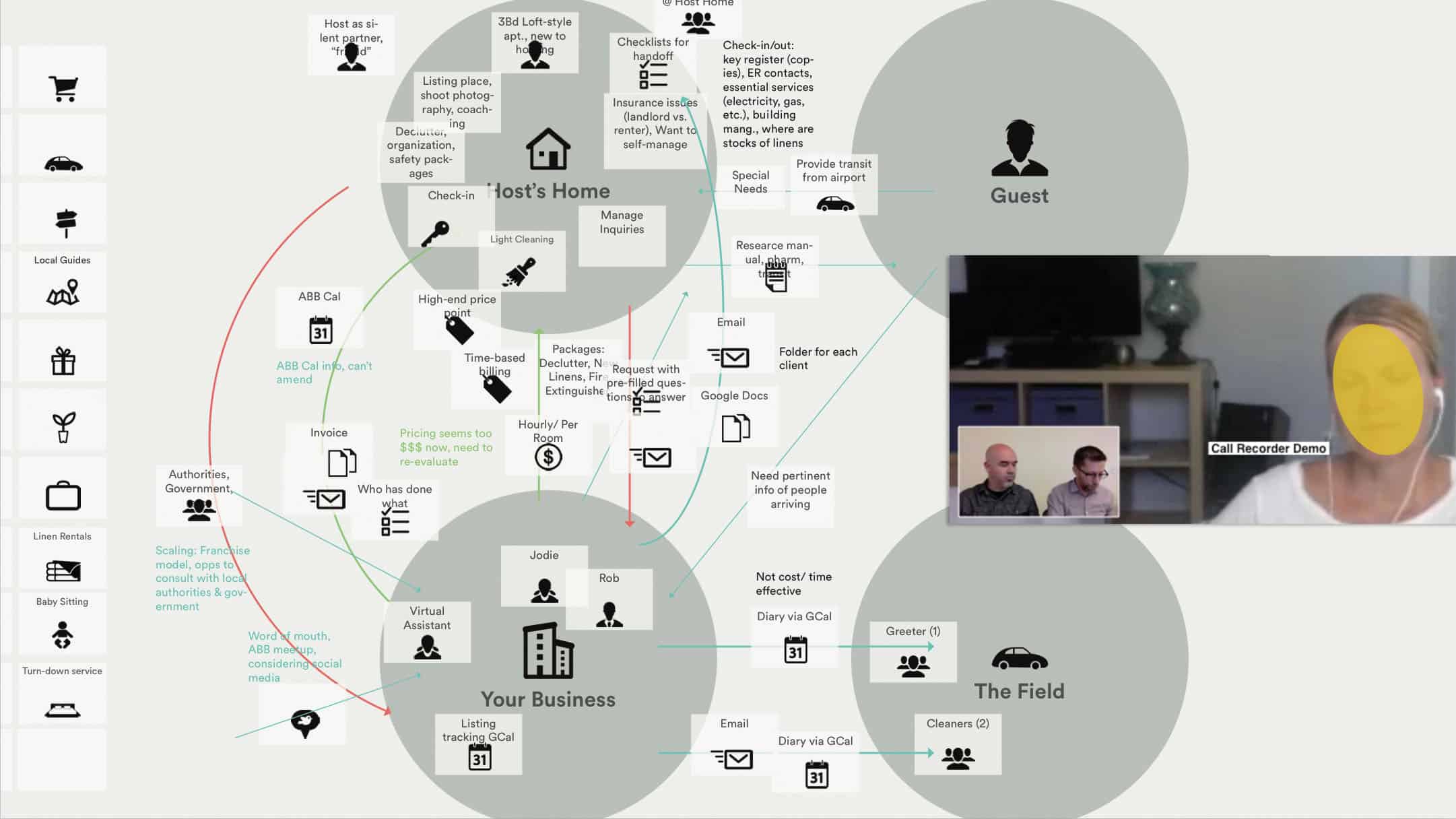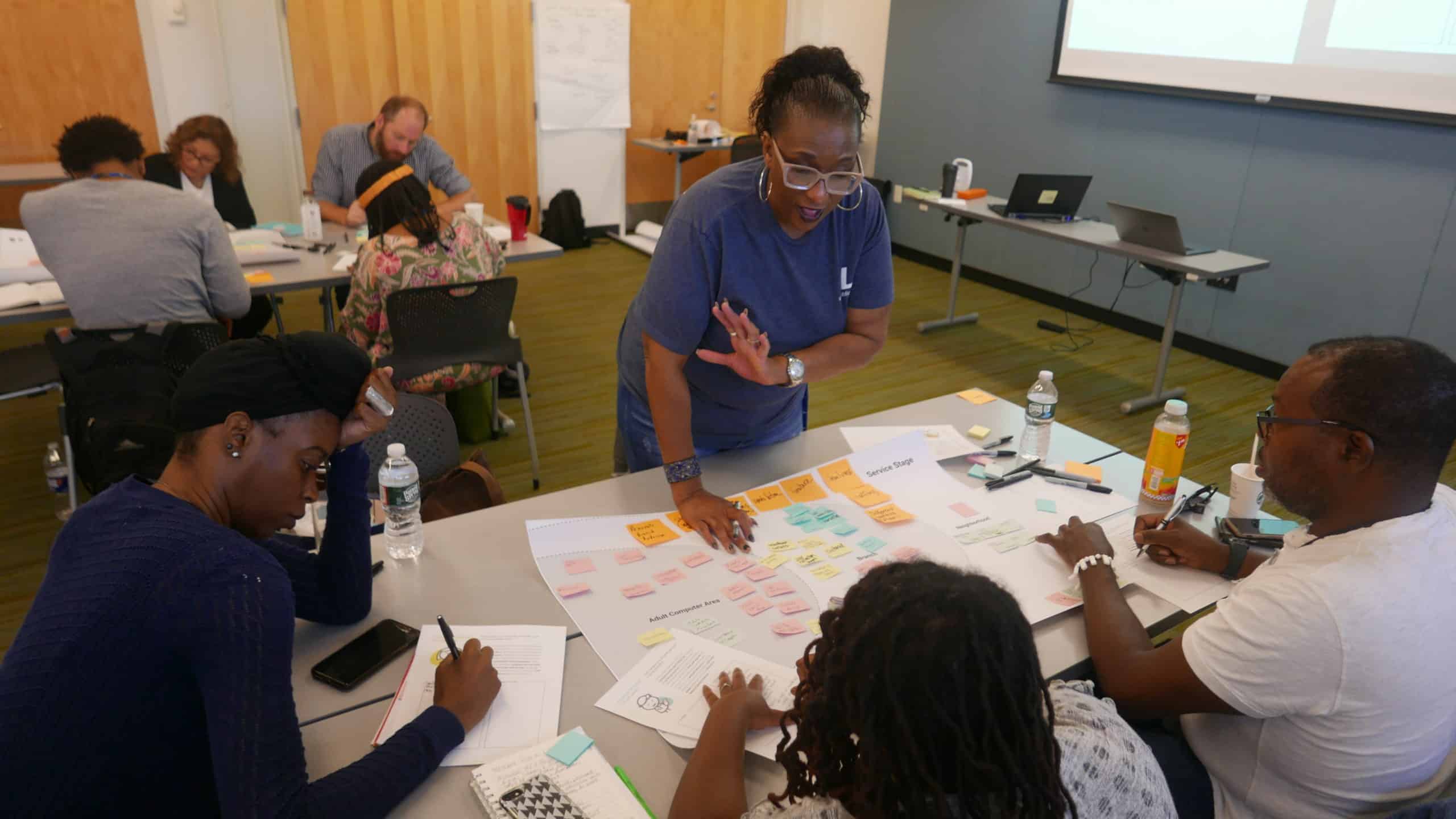
Harmonic Design is comprised of coworkers who deeply care about sustainability. Currently, our measures are focused on Harmonic operations and culture. Most of us use public transportation for commuting, avid recyclers, and mindful of what products we use – absolutely no plastic straws! Recently our office decided to purchase carbon offsets and it had us thinking about our overall sustainability practices. We set out to ask experts in the field of sustainability to learn from their methods and mindset to incorporate sustainability into our design practice.
Our experts range from academics to practitioners. We talked to Scott Boylston, Design for sustainability professor at Savannah College of Art and Design; Paula Chamorro, Design and Visualization Fellow at PYXERA Global; Emma Fromberg, Industrial Design Engineer; Angela Hariche, CEO of Catapult Design; and Joe McCarron co-founder of ReosPartners.
After a few interviews, a surprising topic continued to surface: service design in its purest form is a sustainability method. It caused us to pause and reflect on how we work. In this post, which marks our first part in a sustainability series, we will share what parts of the practice reflect the hallmarks of sustainable design. One of the series goals is to demystify the “S” word and how we might actively incorporate these ideas into our practice. We will be reporting back with our successes and setbacks.
We work with complexity.
Nature is a complex network that is in constant movement and changes all the time. We as a society have created our own set of networks that shape the ways we live today. These artificial networks are made of goods and services, and unfortunately, some of these networks have overloaded the capacity of our natural networks to regenerate. According to Scott Boylston, turning goods into services can reduce the lifecycle impacts of objects that circulate in our environment. For instance, Cadillac launched a new vehicle subscription service, Book by Cadillac, where for a subscription, the customer uses any car that best suits their need. Renting a luxury brand might not seem to be a go-to sustainable option but, this service provides a significant sustainable trade-off of not owning a car taking less space in a densely packed city.
Designing how services work and/or could work is a complex task. In an effort to tackle this complexity, service designers look into systems thinking to understand what services are and the value they represent in people’s lives. We immerse ourselves in the complexity of the service ecosystem, and in consequence, we provide solutions that can reduce the impact on the environment.


The circular economy is a model that disrupts cradle-to-grave products by taking out waste and materials and looks at the continuation and evolution of materials. There are many guides and methods to incorporate circular design methods, but it requires a set of cross-functional individuals, resources, and the right mindset. In service design, we bring together different parts of the organization and align on a vision for how we can make people’s lives better. What is common about these two scenarios is that the outputs produced are intangible.
“In service design, you have the option to dematerialize by creating extra value without having to put together a lot of products.”
Emma Fromberg
In her talk at Service Design Now, Emma Fromberg references Mud Jeans, a jeans subscription service where when the jeans are returned, the fibers are reused. The wearer doesn’t own the jeans, and the jeans as a product is reused, but the value to the customer is free repairs and the ability to explore fashion trends. In service design, when we reimagine service experiences, we rethink how operating systems should work and how we can better integrate people with service offerings without unnecessarily producing (more) waste.

Service designers employ a multi-faceted approach that helps examine the full system and its main actors. When we map out the main actors and their dependencies, it allows us to look into how services can impact people’s lives. The challenge gets greater when we deal with systems that are not designed to support people with lesser power to change the way things work.
There is a strong tie between poverty and the environment. As the UN reports, “poor and marginalized groups are disproportionately dependent on ecosystem services.” It states that adhering to better methods of sustainable efforts could help decrease poverty. Angela Hariche advocates that sustainability means designing, developing, executing, and maintaining products, services, and policies that take into account underserved populations and brings all sectors to the table. Joe McCarron expands on this by saying that it is important to build a deep understanding of the current situation and to work together to create a system that makes sense for those involved.
As part of our ethos, when conducting design research, we make a committed effort to interview research participants from different social levels and backgrounds. A mixed representation of perspectives provides a holistic vantage point, which leads to opportunities to design for. By doing this, we carefully craft solutions that can solve for a diverse set of unmet human needs.

“I understand I’m part of an ecosystem and my needs aren’t more important than any other species on this planet.” This ecosystem-centered view exposed from Paula Chamorro provides even a larger look at our systems, much like Eames illustrated in the Powers of Ten. Part of our job is providing solutions in the service of others. How can we adopt the sustainability mindset by looking at the full ecosystem and go beyond our human-centered framework? At Harmonic, we have gone beyond human-centered design by looking at an animal-centered view, but going even further out, how might we use our tools to expand it to an environmental approach? We still have a long road ahead but we can all agree that our design solutions are aimed towards the ultimate goal: build connections with each other and the place we live in.



As described above, service design is a “natural fit” for sustainability. We are able to design solutions that are inclusive, speak to unmet human needs, and nurture connections among all living things. But there is so much more we can learn from a sustainability standpoint, and incorporate that into our ways of doing service design work.
In our next entry, we will continue our exploration of sustainability with design methods that look at circular design.